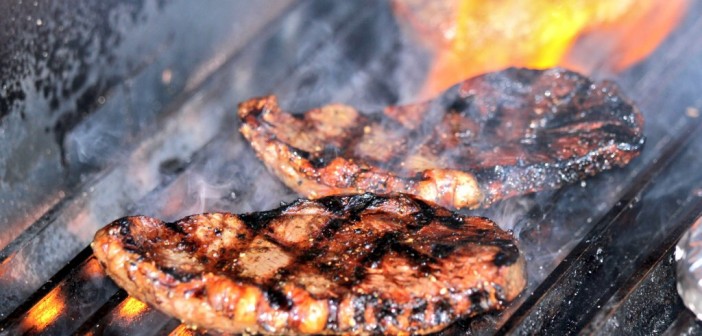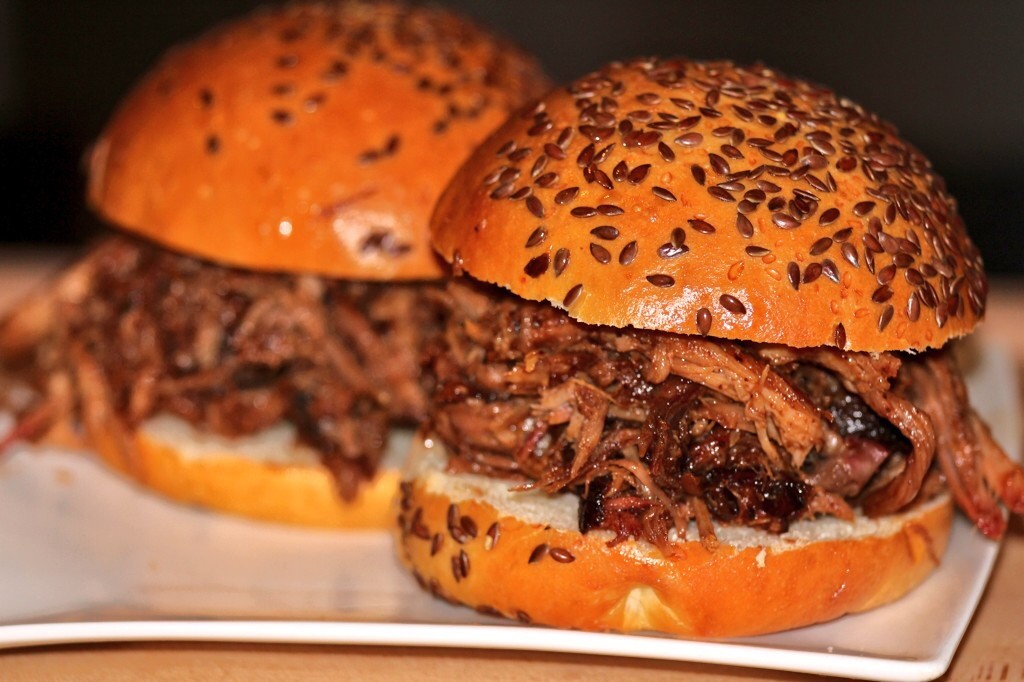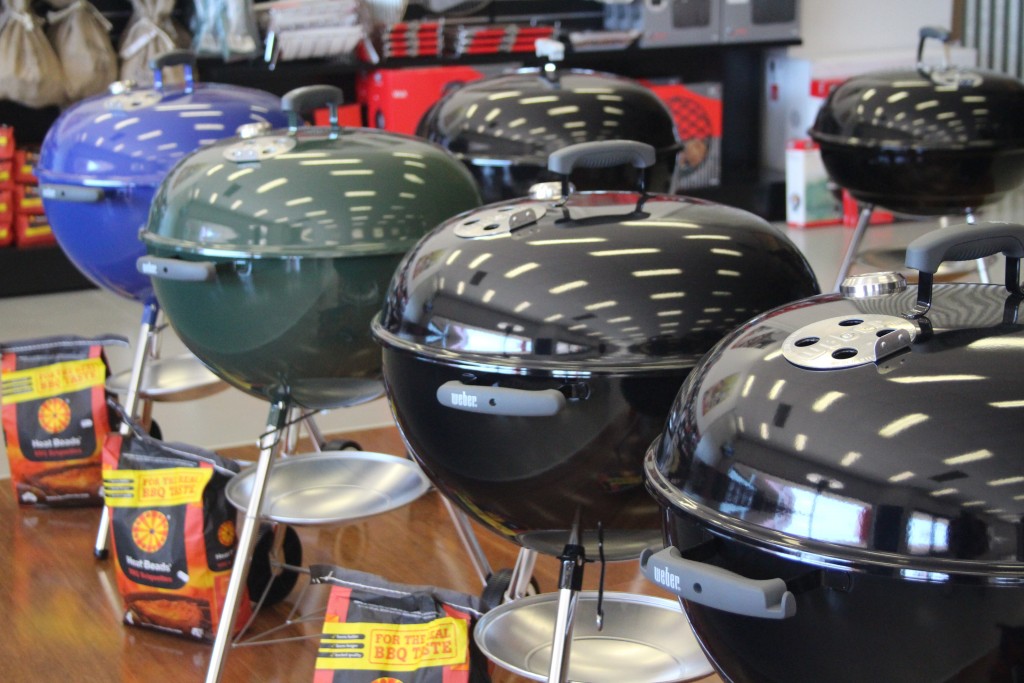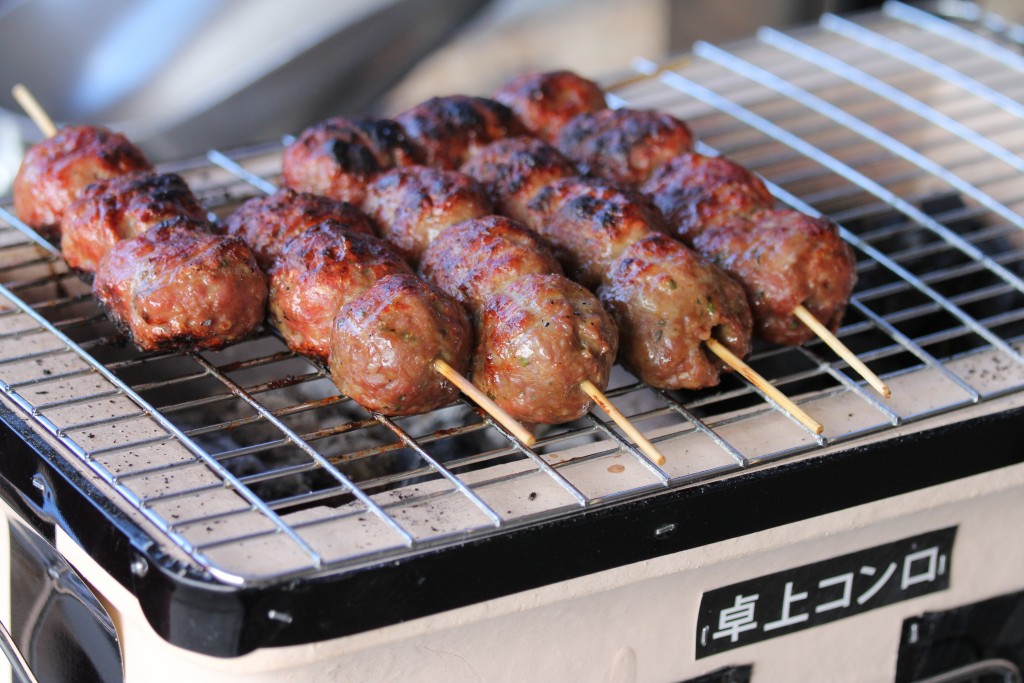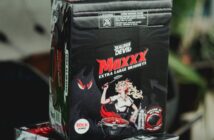Cooking on the barbie has come a long way in the last few years. What was once the domain of simple snags and steaks has become the go-to place for slow cooked brisket, pulled pork and melt in your mouth ribs. David Hunt begins our newest column by delving into the various BBQ’s on the Aussie market.
My love affair with ‘Low and Slow’ BBQ started in 2001where I spent several holidays with my young son in Orlando. A fair amount of time was spent at the Theme Parks and it was during this time that I was introduced to ‘Low and Slow’ food. Needless to say, I fell in love with pulled pork and spare ribs. However, even after this, I remained a typical ‘Snag Burning’ BBQ person.
When I moved to Australia in 2005 I thought I was going to find BBQ nirvana. I had seen Paul Hogan trying to tempt foreigners to come to Oz with the promise of ‘Throwing another shrimp on the BBQ’. I soon realised that typical Aussie BBQ was a burnt snagger in a slice of bread, served to me at Bunnings with tomato sauce.
Forward to 2012 and once again I started to get excited about the thought of great BBQ. I joined some Aussie BBQíng forums and lurked in the background, looking for that perfect BBQ. Early in 2012 I heard about a BBQing event at a house in Kallista, Victoria, where a multi American Grand Champion was going to be cooking BBQ on a pellet grill. I had never heard of a pellet grill so was itching at the bit to see what it was all about.
I went to the event and met Andy Groneman. Andy showed us how to prepare pulled pork, brisket, ribs, chicken and even ‘planked salmon’ all on a pellet grill. That was it… I was hooked.
I bought a new gas grill and before it was even delivered I ordered a new Yoder Smokers Pellet Grill. I have also bought a Komodo Kamado Charcoal Grill since, and now find myself spending most weekends cooking the most amazing BBQ’s.
‘Low and Slow’ BBQing has really started to take off in Australia in the past couple of years. We have seen several new pellet grills, a whole host of Kamados, Blues and BBQ Festivals and more recently, BBQ competitions, loosely based on the massively popular American BBQing competition circuit.
With this column, I’m hoping to share some of my passion and knowledge as well as inspire you to take a fresh approach to your own BBQing journey.
To start with, I wanted to discuss the different types of BBQ’s currently available in the Australian market. By no means am I an expert, in fact I still consider myself to be in the very early stage of my learning cycle. Regardless, these are my thoughts and opinions, gathered from research undertaken over the past couple of years.
DIFFERENT TYPES OF BBQING
There are two main approaches to BBQ: direct or indirect heat. Direct grilling is suited to ‘Hot and Fast’ whereas indirect grilling is perfect for ‘Low and Slow’.
Direct heat
This is the method used in most Australian homes. The meat is placed on a direct heat source; this can be gas, wood, charcoal or even pellets. Temperatures are typically hot and range from 250°C-370°C, hence the name ‘Hot and Fast’. This method is great for grilling steaks, sausages, burgers and anything else where you expect your meat to be ‘licked’ by the flame. While there is an ability to produce fantastic flavoured meats, the approach can quickly transform your meat to overcooked charcoal too. With that in mind, particular care needs to be taken when cooking ‘Hot and Fast’.
Indirect Heat
This is the method most frequently used for ‘Low and Slow’ BBQing with a typical temperature range of 110°C-135°C. The most important aspect to grasp is that the meat is no longer in direct contact with the heat source. This can be achieved in a number of ways, including: having the heat source in a different area, employing a heat deflector or by having a two zone cook on the same BBQ. This means that ‘Low and Slow’ can be done on all types of BBQ’s but adding that smoky taste is limited to a few.
DIFFERENT TYPES OF BBQ’S
In Australia we are blessed with a wide range of BBQ’s on the market. Some excel at ‘Hot and Fast’, some are fantastic at ‘Low and Slow’ and some can do both. I will go through the main types of BBQ’s and list some of their features.
Gas BBQ’s $300-$5000
Brands: Weber, GrandHall, Beefeater etc
Most people have a gas BBQ. Fuel is plentiful and relatively cheap. Gassers are great for grilling over a direct flame and they can perform indirect grilling but need a lot of work to maintain the temperature. For indirect grilling you only light one or two burners before placing your meat on the opposite site, away from the flames. You need to get this side to around 110°C. Low and Slow is OK but not great, as you will struggle to impart the smoky flavour typically associated with this type of food. You can use smoke pellets or wood chips but the lid on a gasser is burdened with a lot of places for the smoke to escape, so it is difficult to achieve a smoky flavour.
I have a great gas BBQ but since purchsing a Pellet Smoker and Kamado, I must admit it rarely gets used. The versatility and flavours from the other BBQs, means my ‘gasser’ is basically redundant. In saying that though; gas BBQ’s are very immediate and convenient to start and still turn out a great BBQ.
Kettles and Bullets $300-$800+
Brands: Weber, ProQ etc
Kettles and Bullets are the most common types of BBQ’s and a lot of people achieve amazing results with these charcoal grills. The Kettles are great for hot, fast grilling and can be used for indirect cooking but are a bit more difficult to work with due to temperature management and having enough fuel for a long cook. The Bullets (Weber Smoky Mountain) have the addition of a water pan between the charcoal and the meat. This ensures that you have an indirect cook, gives more temperature stabilisation and maintains the cooking area at a relatively high humidity.
A lot of people start with these BBQ’s thanks to their affordability so if you’re considering a leap into BBQ cooking, these make for a great place to hone your fire management skills.
Pellet Smokers $1200-$6000
Brands: Yoder Smokers, Traeger, Green Mountain Grill etc.
Pellet Smokers use compressed sawdust pellets that are fed through an auger, dropped into a fire box and set on fire using an electric igniter rod. The speed of the auger determines how many pellets drop into the fire which in turn determines the temperature of the grill. Pellet Smokers can be set and forget which means you can set the temperature and allow the electronics to maintain it. This method also imparts a great smoky flavour that is not too overpowering or acrid.
Some Pellet Smokers can also grill, which is great up to 250°C but if you want to go higher, they tend to struggle. I like to grill at 370°C, so I use my Kamado for Hot and Fast. Pellet Grills do make a mean pizza though, at around 250°C, and can turn out a good steak.
Pellet Smokers are quite expensive to cook with, so you have to trade off ease of use, against cost to run. I use a Yoder YS640 Pellet Smoker for all of my Low and Slow; pork shoulder can take up to 20 hours to cook after all. Set and forget is very important to me, especially when cooking overnight. To help with the use of the pellets, I normally smoke a couple of briskets or pork shoulders. I then put the spare meat into vacuum sealed bags, freeze and then reheat in boiling water when we’re ready to consume again. This way I get the best bang for my buck and can create amazing flavoured meals at a moment’s notice.
Kamado’s $700-$6000
Brands: Primo, Kamado Joe, SmokeKings BBQ etc.
Kamados are a ceramic grill that originated in Japan. These grills typically use charcoal, which means they are very cheap to run and infuse the meat with fantastic flavour, especially if you add fruit wood chucks during Low and Slow cooks.
I have a Kamado and typically do all of my hot grilling on it at 370°C. The flavours that are imparted onto my steaks are simply mouth watering. It is also great for making pizzas and calzones. The Kamado has the ability to cook Low and Slow, as long as it has a heat deflector in between the charcoal and the meat. The hard thing with this is that the pit needs a lot of attention, ensuring you keep close to the 110°C temperature range. You will have to play with the top and bottom vents to hit the perfect temp and over time this can be done really well – you just need to know how to master your pit.
There is another problem that you will most likely face and that’s running out of fuel. This means you’ll have to remove your meat and grills and add more charcoal, which can become annoying. It can be overcome by adding temperature controllers, such as a BBQGuru, which will electronically control the temperature by using a fan. I use one of these, which means I can have a full night’s sleep, while it smokes my meat.
I personally own a Komodo Kamado from Bali, which is not only a fantastic BBQ but looks like an amazing piece of art.
Offset BBQ’s $400-$5000+
Brands: Yoder Smokers, Hark, Lang, Silver Creek etc.
This type of BBQ is more a purist way of smoking meat. These are also known as ‘stick burners’ as they use wood and charcoal as fuel. These BBQs typically have a separate firebox and cooking pit, the fire is lit in the firebox and the smoke and heat goes over your meat without it coming anywhere near the flame. This is probably the ultimate way to cook Low and Slow but requires a lot of work. You will need to constantly manipulate the fire to ensure you keep to the right temperature; you will also have to regularly add fuel to keep it going. This means there will be some sleepless nights but it will produce fantastic results, if you get it right. This method will impart much more of a smoky flavour than the other methods but you have to be very careful not to overpower the meat or let the smoke taste become acrid.
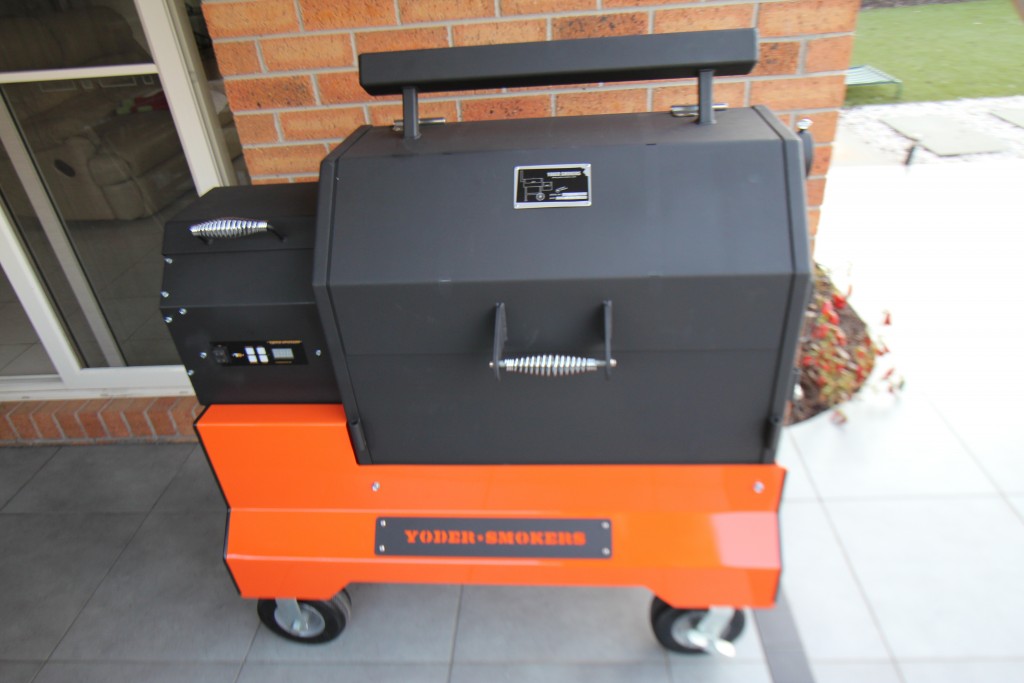
I have never used a stick burner, because I am too lazy but at some point I think I will get one. A lot of people do swear by them and would never use anything else.
Electric/Gas Smokers $500-$800
Brands: Bradley, Hark etc.
These are vertical cabinets and fairly dissimilar, to the above mentioned BBQ’s. The Bradley uses compressed sawdust pellets that produce a smoke in the cabinet that infuses into your meat. The heat is produced using an electric element, which means you can use these for cold smoking things, such as cheese. These look like an easy way to produce smoked meat/food but have limited space inside (you would struggle to fit a full size brisket in one) and you are limited to buying Bradley Smoker Pucks, which can be expensive. But if you are keen to get into smoking, these do make for a relatively low cost approach and are relatively ‘set and forget’ as they are electronically controlled.
DO IT YOUR WAY
You will need to make your own choice based on what your personal food and cooking preference is so it pays to know your local BBQ store as they will be your greatest resource. Let them know what you’re into and they’ll be sure to point you in the right direction.
If I were to make recommendations, I’d suggest a kettle or bullet if you’re just starting out and don’t want to spend more than $1000. Alternatively, if your budget is larger and you’re really into Low and Slow meat, I would go for a Pellet Smoker due to the set and forget capability. A great midpoint would be a Kamado as they’re great for grilling and do Low and Slow really well. Whichever way you go, I’m sure you will have fun BBQing, and if you’re anything like me, you will become addicted.
Finally, join some BBQing forums, as they make fantastic resources with people really eager to help you. Join up and feel free to ask any questions, as someone will always take the time to reply to you. I’ve listed a couple below; one is an Australian BBQ Forum that has very friendly members and the other is a forum in the US which is a massive depository of knowledge.
COMING UP
In future articles I will talk about the BBQ Competition Circuit here and in the USA, different types of tools and gadgets, various rubs and sauces, as well as some great BBQ recipes.

